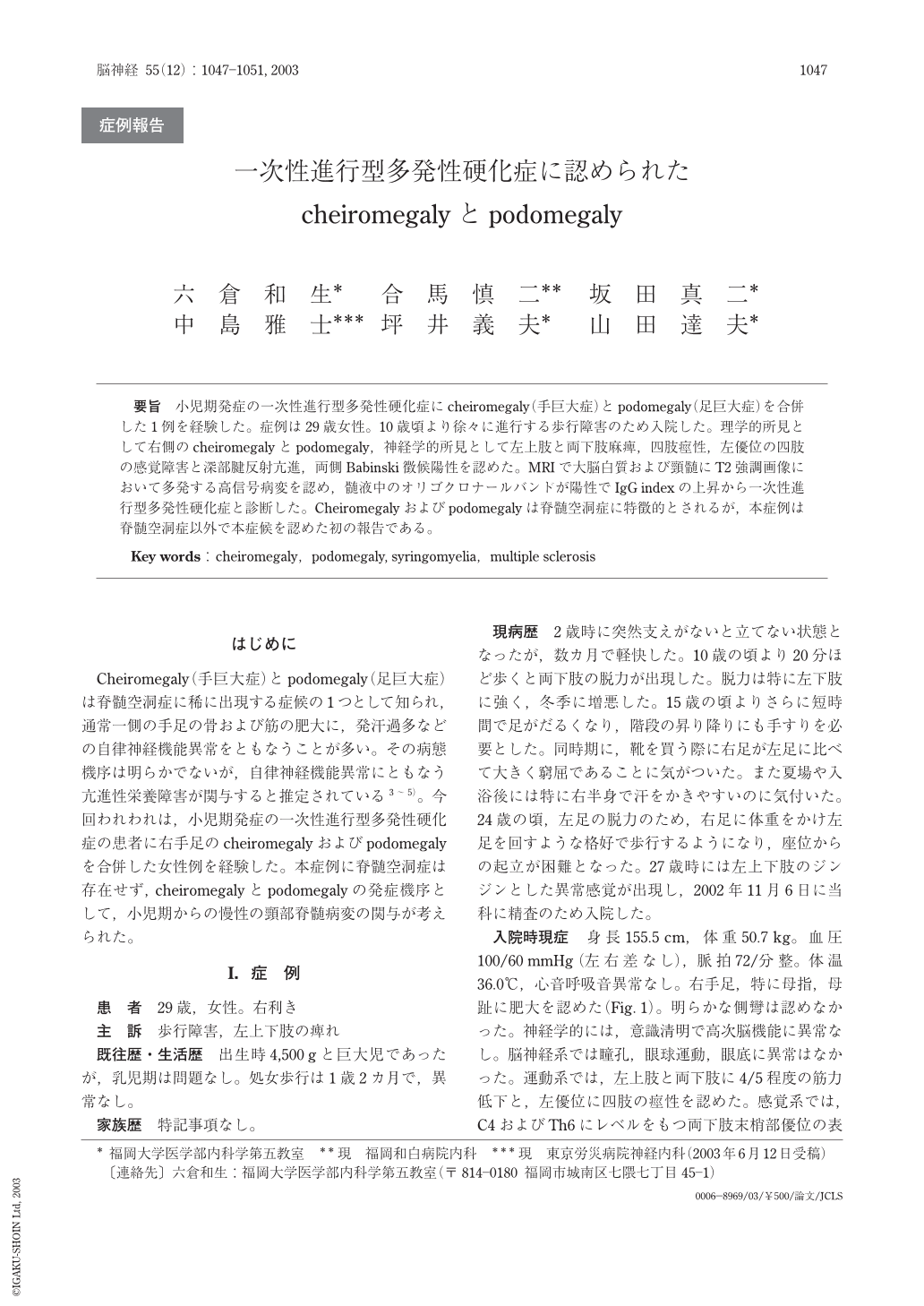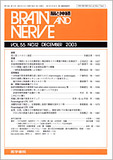Japanese
English
- 有料閲覧
- Abstract 文献概要
- 1ページ目 Look Inside
要旨 小児期発症の一次性進行型多発性硬化症にcheiromegaly(手巨大症)とpodomegaly(足巨大症)を合併した1例を経験した。症例は29歳女性。10歳頃より徐々に進行する歩行障害のため入院した。理学的所見として右側のcheiromegalyとpodomegaly,神経学的所見として左上肢と両下肢麻痺,四肢痙性,左優位の四肢の感覚障害と深部腱反射亢進,両側Babinski徴候陽性を認めた。MRIで大脳白質および頸髄にT2強調画像において多発する高信号病変を認め,髄液中のオリゴクロナールバンドが陽性でIgG indexの上昇から一次性進行型多発性硬化症と診断した。Cheiromegalyおよびpodomegalyは脊髄空洞症に特徴的とされるが,本症例は脊髄空洞症以外で本症候を認めた初の報告である。
Abstract
Cheiromegaly is an extremely rare syndrome characterized by unilateral hand hypertrophy with hyperhydrosis. Unilateral foot hypertrophy has been described as podomegaly. Cheiromegaly/podomegaly is usually seen in patients with syringomyelia. Although the underlying pathophysiology remains unknown, it is speculated that chronic cervical cord injury including central descending sympathetic tract is essential for development of this syndrome. We report a cheiromegaly/podomegaly in a case with primary progressive multiple sclerosis. This 29-year-old woman developed cheiromegaly and podomegaly in her right hand and foot associated with chronic progressive cervical myelopathy. At age two, she developed transient paraparesis with full recovery, suggesting her symptomatic onset of her longstanding illness. At age 10, she had left leg weakness, and gradually worsened. On admission at age 29, she had muscular weakness in her left upper and both lower extremities. Sensory impairment was seen below her 5th cervical and 6th thoracic dermatome level. Her deep tendon reflexes were exaggerated in all extremities with bilateral Babinskiユs signs. MR imaging showed multiple plaques in the white matter of the brain associated with cervical spinal cord lesions. Taken together with the presence of oligoclonal band IgG in the cerebrospinal fluid, this patient met the criteria of multiple sclerosis. This is the first report presenting cheiromegaly/podomegaly not associated with syringomyelia, but with multiple sclerosis. It is suggested that cheiromegaly/podomegaly in present case may be caused by chronic cervical cord injury affecting descending central sympathetic tract associated with primary progressive multiple sclerosis.
(Received : June 12, 2003)

Copyright © 2003, Igaku-Shoin Ltd. All rights reserved.


